
For my birthday this year, I decided to travel to Athens, Greece, with a good friend of mine who also has a birthday around the same time. It was my first time visiting Greece, and after spending a few days there, I’ve concluded that this trip was long overdue. Greece is basically the perfect place for a visitor like me. It’s English-friendly, beautiful, affordable, lively, and – best of all – a land of unparalleled history, legend, heritage, and culture. I only wish I had visited sooner.
During a day that my friend was teleworking, I booked an all-day tour to visit a couple of archaeological sites that are a few hours’ drive outside Athens. Basically, places that you can’t visit without a car and confident driving skills in Greece, neither of which I possess. I found a tour online that was about 100 euros, which turned out to be a really good deal. This covered the following costs:
- Admission to the archaeological sites of Mycenae (pronounced My-SI-ni), a powerful Bronze Age kingdom, and Epidaurus, the best-preserved open-air theatre in Greece.
- A live, human tour guide who accompanied us all day and explained everything in detail.
- Four-course lunch at a random hotel in the middle of nowhere.
- We also made half-hour stops at the Corinth Canal and the seaside town of Nafplio.
- Of course, transportation was also included, in the form of a large, air-conditioned bus.
I’ve had mixed experiences before when it comes to joining group tours with strangers – such as an Indian food tour in London earlier this year where I was ignored by some and subjected to weird comments from others – but this one was a great experience, as someone who prefers to travel solo without feeling the need to socialize or make small talk with strangers. Except for one hour of sit-down lunch, during the rest of the day, I was either chilling on the bus or actively walking around and exploring an archaeological site. There was no time to feel isolated or awkward.
We started off the day at 8:20am, when I walked to the Hotel Amalia near Syntagma Square and was picked up along with three other people. The bus made two more stops at different hotels, and in the end it came to 19 people – overwhelmingly Americans, plus three French tourists.
In theory, the tour was sold as fully bilingual in English and French, and the tour guide was very much fluent in French. But because the vast majority were native English speakers (and let’s face it, Americans tip a lot more), the guide decided to only provide the narrations in English, while inviting the francophones to ask him privately for any clarifications. Suffice to say, the French were not thrilled with this arrangement – more on this later.
Our first stop of the day was at a Corinth Canal, which first began construction in 1AD (!). Due to logistical challenges, the process was delayed by… oh, almost two thousand years or so. It’s quite a narrow passage and not really used commercially anymore, but still impressive to look at.

(This is also where the name Corinth struck me. Why was it so familiar? Then I remembered the book of Corinthians from the Bible. Two millennia had passed, and here was Corinth, still standing! I was left in awe.)
Other than a bridge overlooking the canal, there was not much to see here. We stopped here for half an hour, then proceeded to Mycenae.
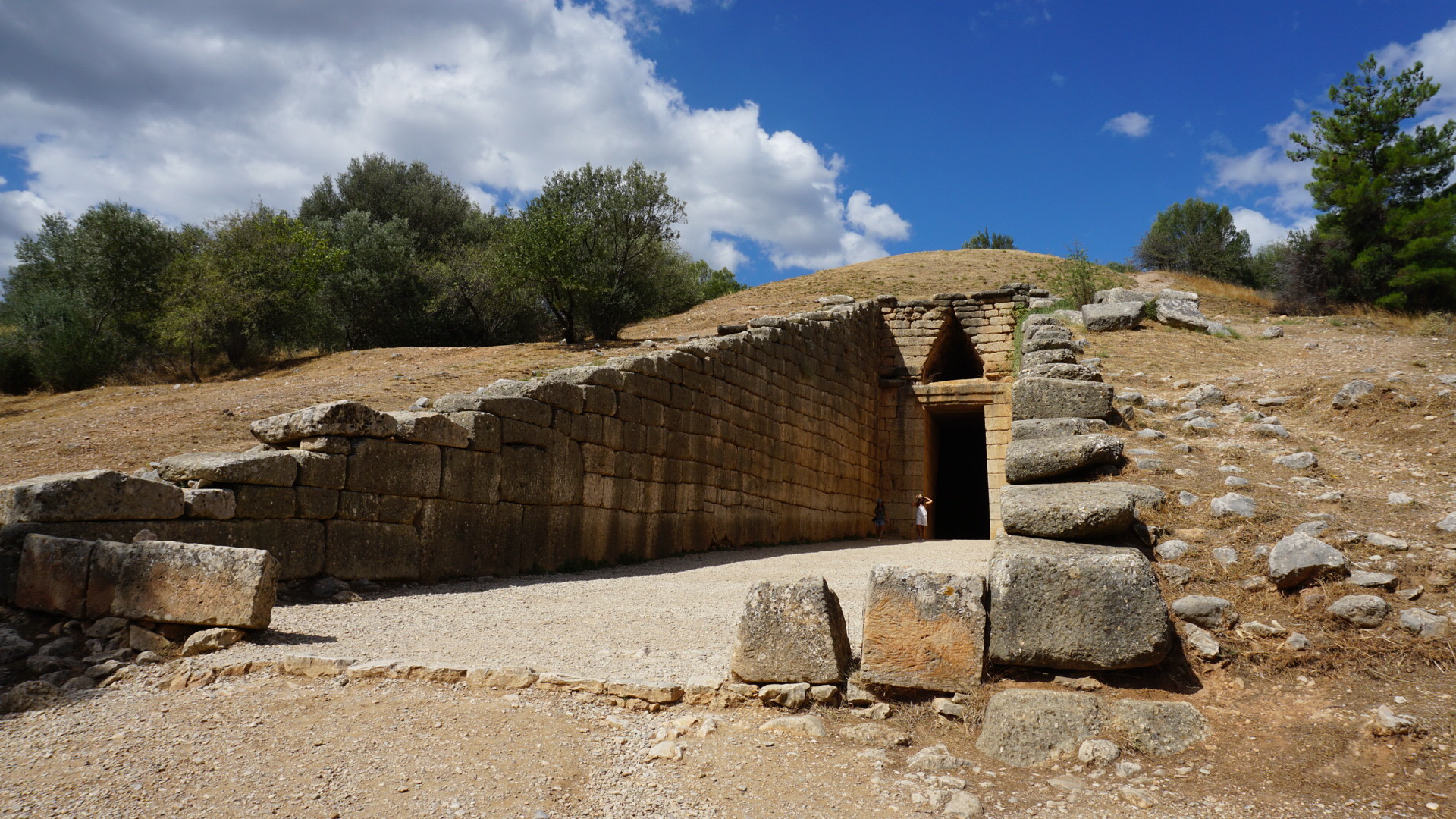
Our first stop in Mycenae was the Treasury of Atreus / Tomb of Agamemnon, a large, empty round structure with a cone-shaped roof.
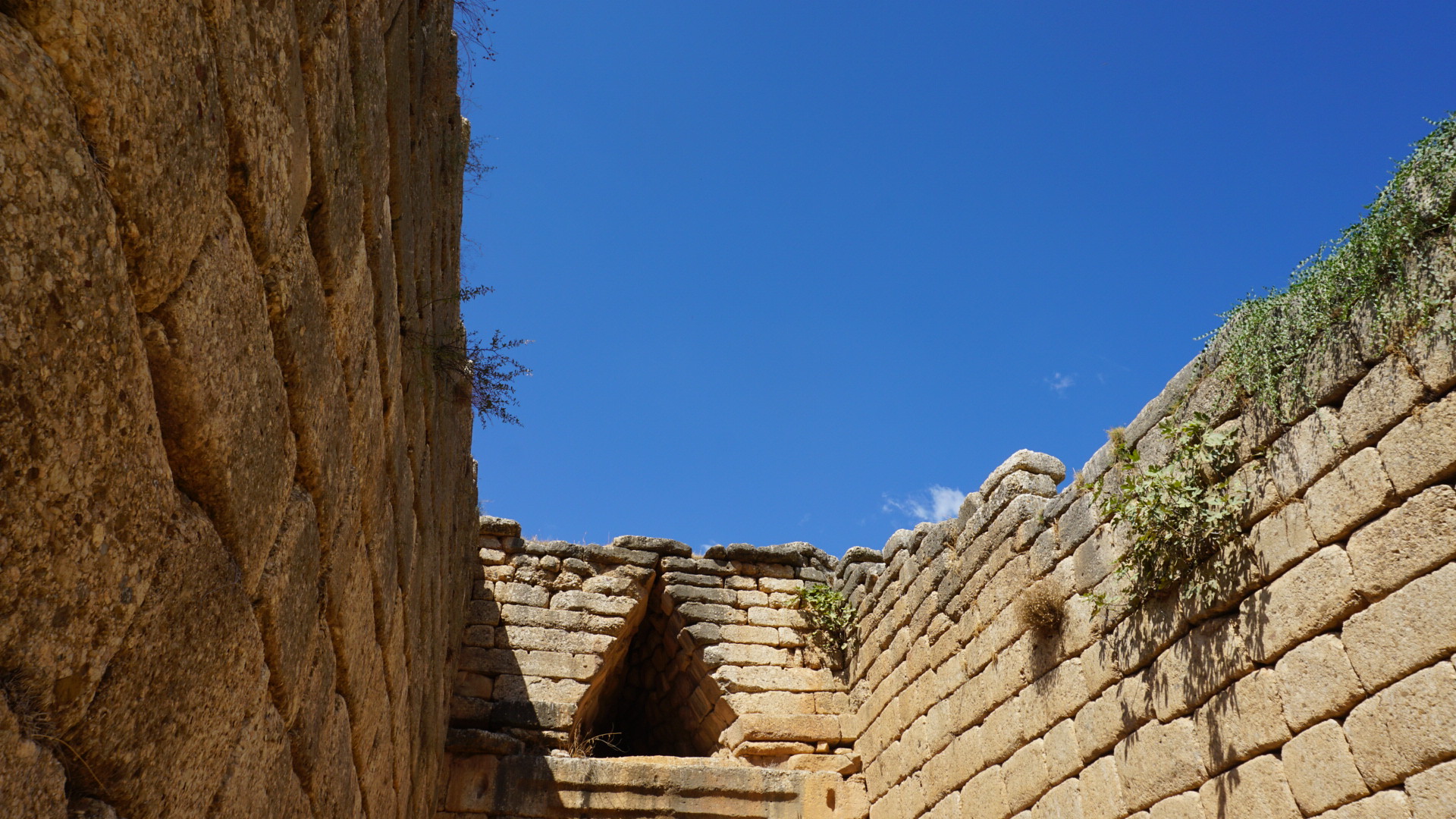
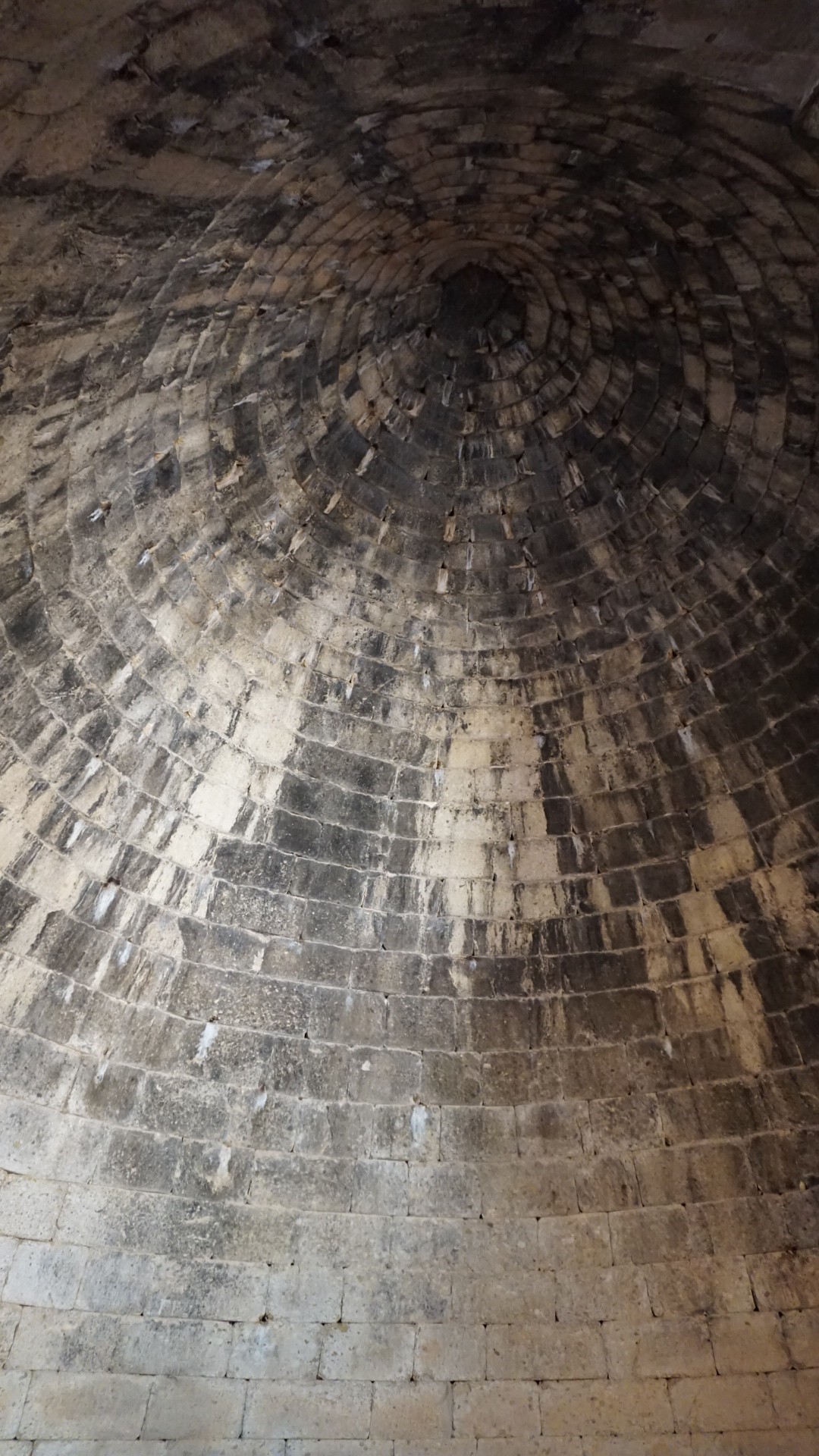

From here, you could see the Acropolis of Mycenae just down the road. I was surprised to see that it was both smaller and lower in altitude than I had expected.

We then drove a few more steps to reach the Acropolis itself. It was surreal seeing the remnants of a structure that had existed since around 1200 BCE; all that remained were a few stone paths and markers where walls had once stood. It was impossible to imagine that a powerful palace had once stood here, on this dusty hill. Only the remarkably well-preserved Lion Gate at the entrance gave a hint of the splendor that had once characterized Mycenae.
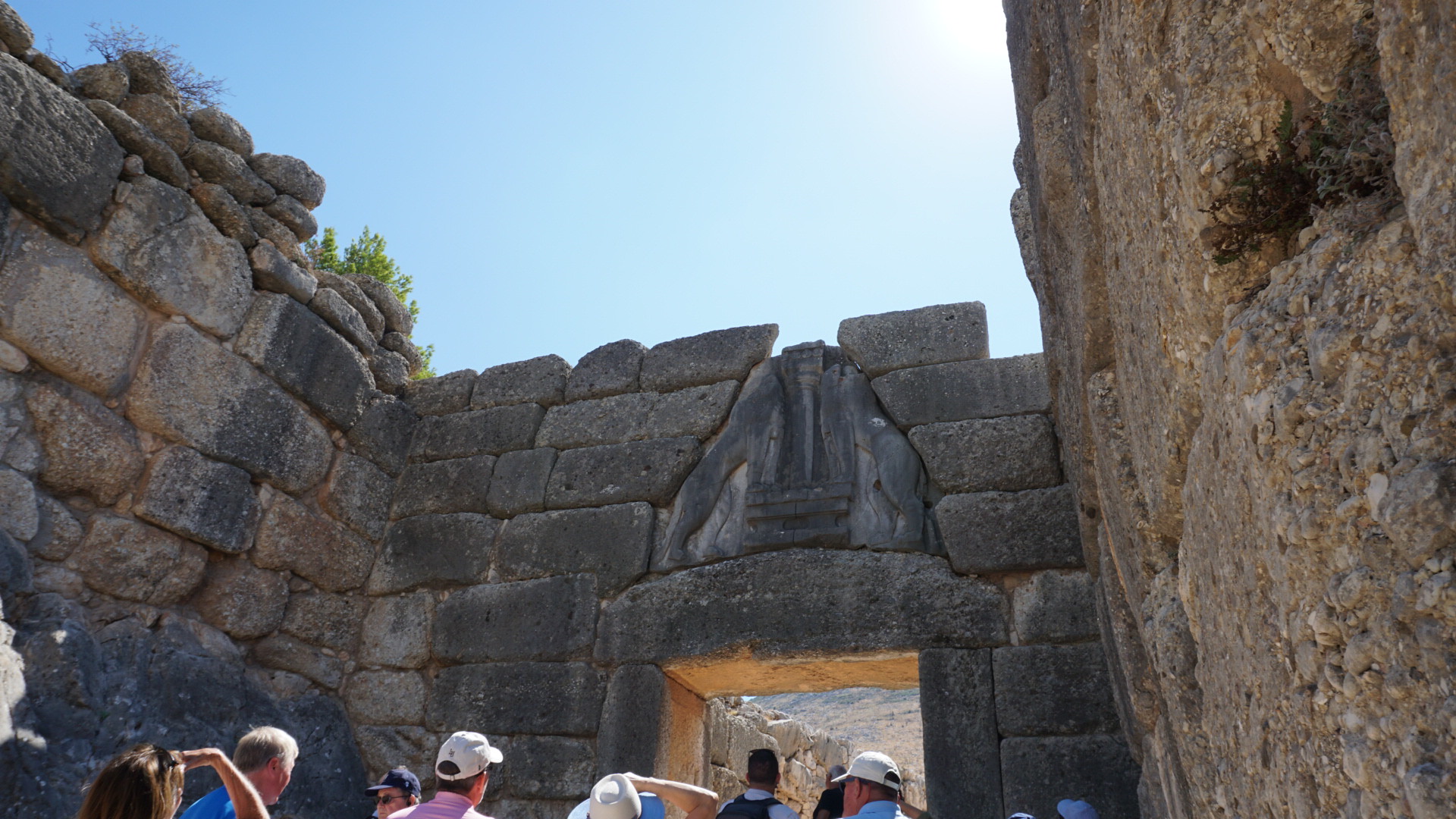
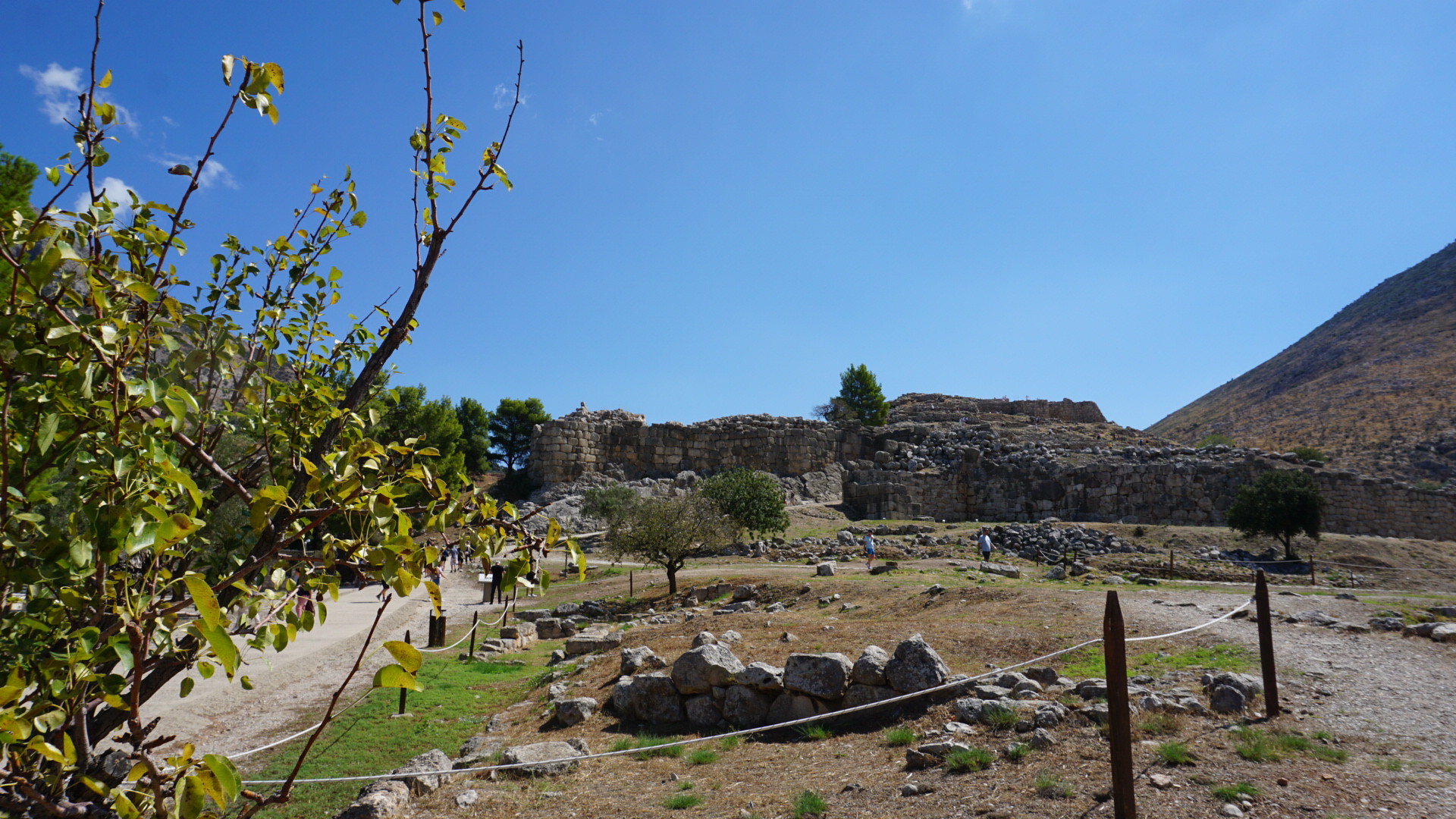
Standing at the foot of the hill, the guide told us about the mythology of the place. The king, whose brother was married to Helen of Troy, had promised to send fleets of ships to help get her back after she ran away with / was abducted by Paris. But the winds would not cooperate, and he had to sacrifice his infant daughter to the gods for their favor. His wife, who was rather not cool with the whole thing, ended up murdering him in the bathroom, as well as a young woman he had taken up with (Cassandra) and their love child.
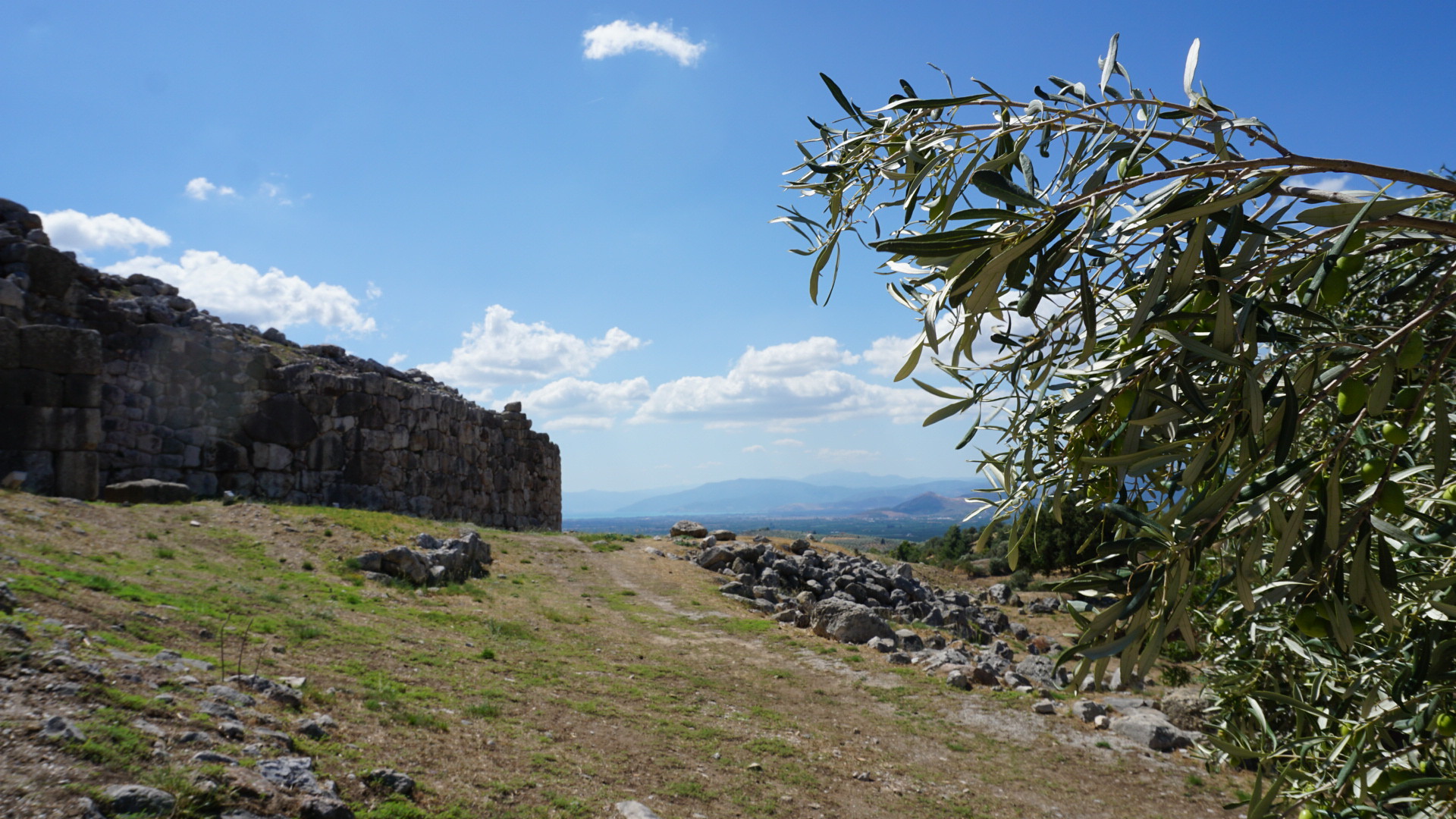
Surprisingly, the myths were backed up by archaeological finds in the 1800s, where excavations turned up skulls buried in gold masks. The next day, I saw the mask – known as the Face of Agamemnon – in the National Archaeological Museum of Athens.
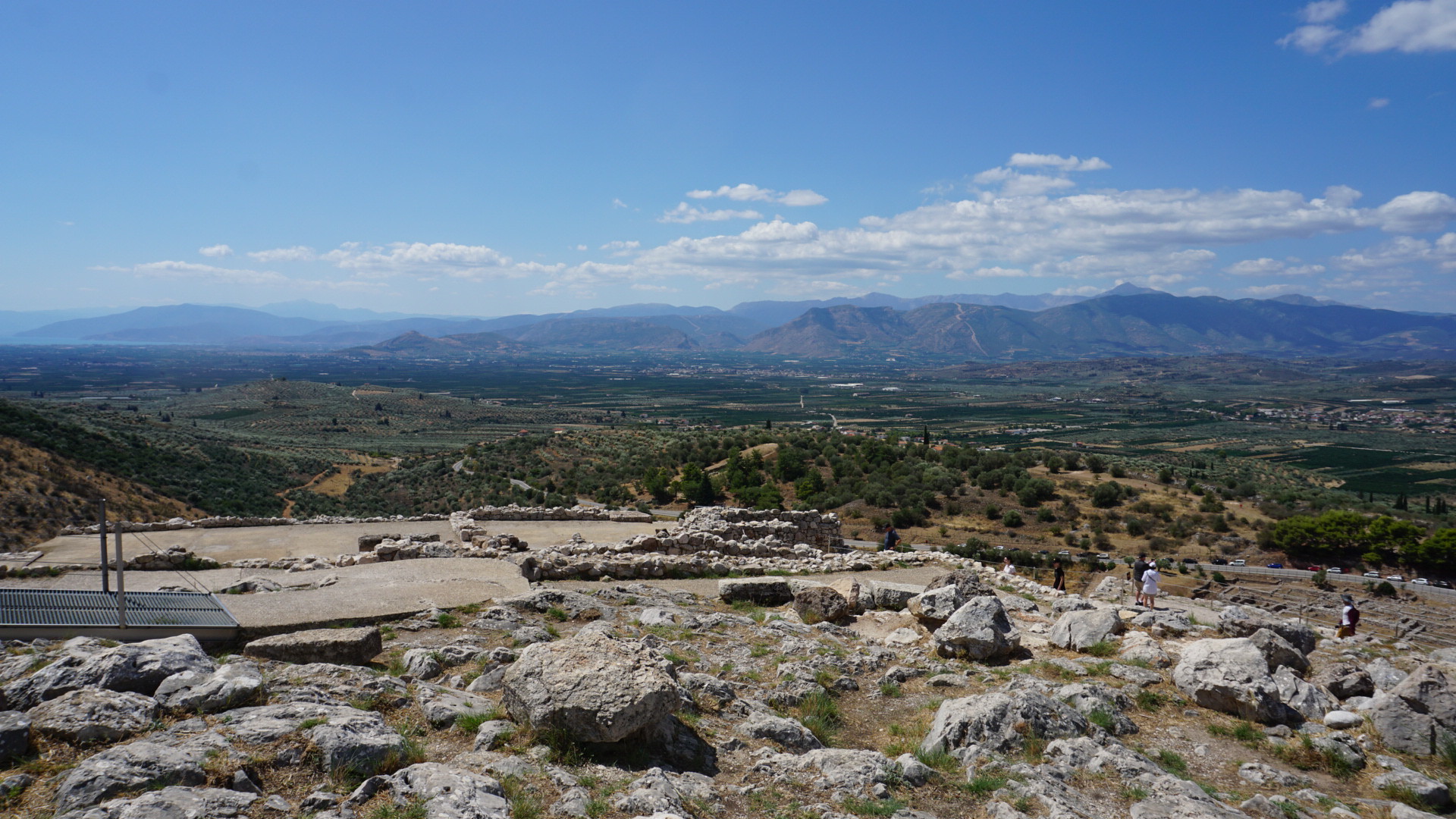

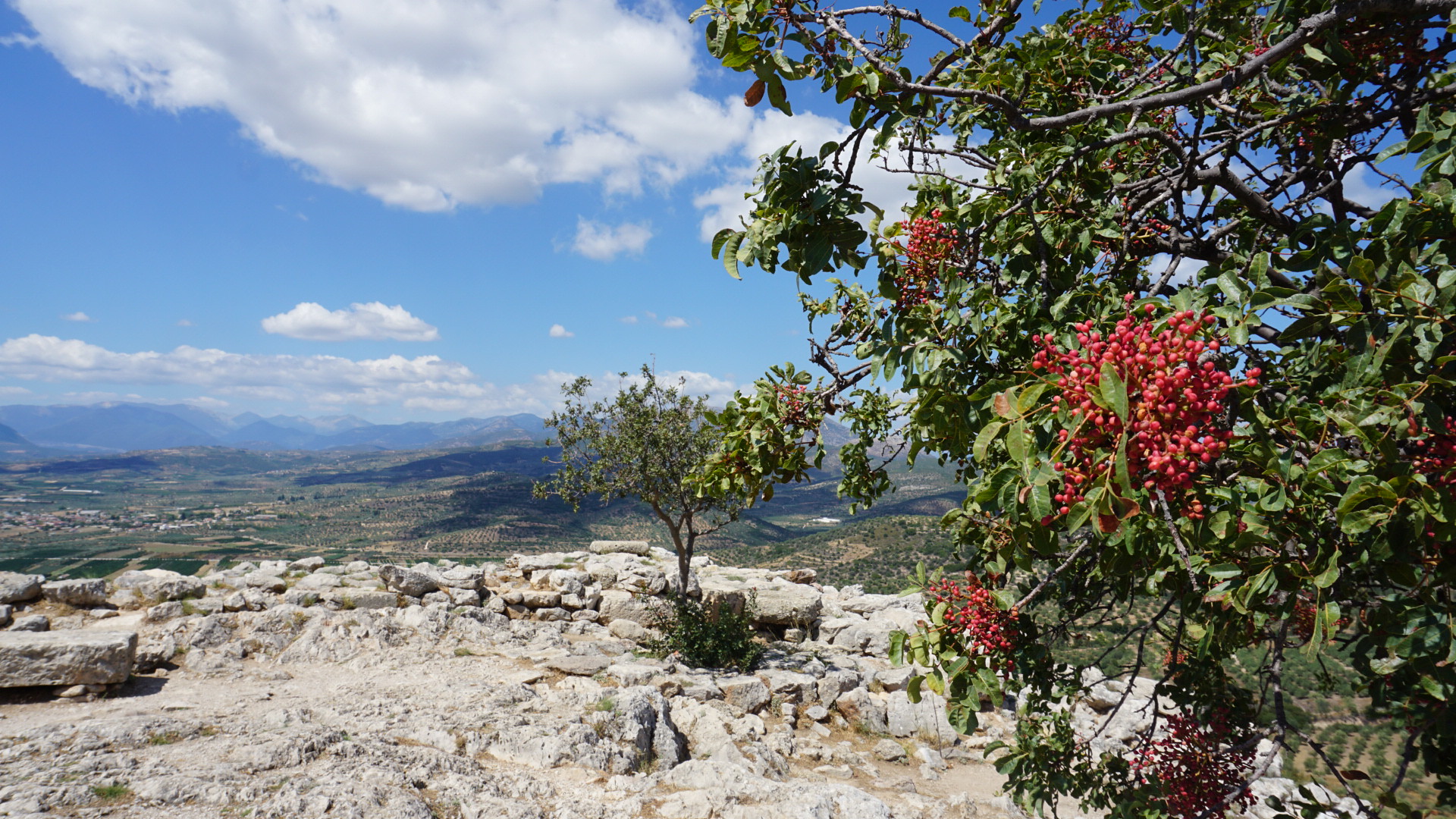
It only took 5 minutes to ascend to the top of the Acropolis. Here is a POV video I filmed of the walk using my new action camera.


Soon, it was time for lunch. The bus headed straight to the Hotel Amalia near Nafplio – which, not to sound harsh, was kind of located in the middle of nowhere. The surrounding area was totally rural, full of vast, empty fields. Even though the lunch portion was an optional add-on to the tour, it would have been impossible to find another place to eat nearby.
The lunch itself was very nice, as was the hotel: despite the dryness of the area, it gave off a green, comfortable spa vibe. The staff were absolutely lovely. We ate in the restaurant in the basement, and four courses were served: a nutty cake; salad; a main course (sausage and roast potatoes for the others, and a big plate of eggplant drenched in tomato sauce for me, lol); and dessert (chocolate cake and vanilla ice cream). There was also bread and free water, while any other drinks cost extra.
By coincidence, I ended up at the same table as the three French tourists. One was a solo traveller, and the other two were a retired couple. “So, can you understand the guide when he speaks in English?” The solo guy asked the couple.
The retired guy shook his head grumpily. “We paid for a tour that was supposed to be in both English and French,” he said. “But it turns out it’s all in English, and I can barely understand anything.”
Feeling bad for him, I decided to pipe up. “It’s not fair for you guys, huh?”
The three of them all turned and stared at me in shock, as though I had just grown three heads. “You can speak French?” the solo guy asked incredulously.
We made a bit of small talk. “Are you Parisian?” I asked the solo guy.
He looked embarrassed, for some reason. “Well, I was born in Paris and grew up there, but I am Algerian by origin.”
“Well, of course you are a true Parisian, then,” declared the retired woman. The Parisian smiled at her gratefully.
After that, they ignored me for the rest of lunch, but it was honestly fine. Small talk is just as tedious in French as it is in English. (“Did you go to the X Museum?” “No, did you?” “No, but I heard it was good.” “Oh.”) At the other two tables, the Americans were thunderously happy, making fast friends with the strangers next to them. I preferred the quiet awkwardness of the French table.
After lunch, we got dropped off at the heart of Nafplio for a quick half-hour to explore the small town there. Nafplio was beautiful, and I wish we’d been allotted more time – the ocean was a jewel-like shade of azure, the streets were lined with lovely shops, and in the near distance was a hill with a castle. I would love to come back here one day; this is a place that deserves more than a pit stop!
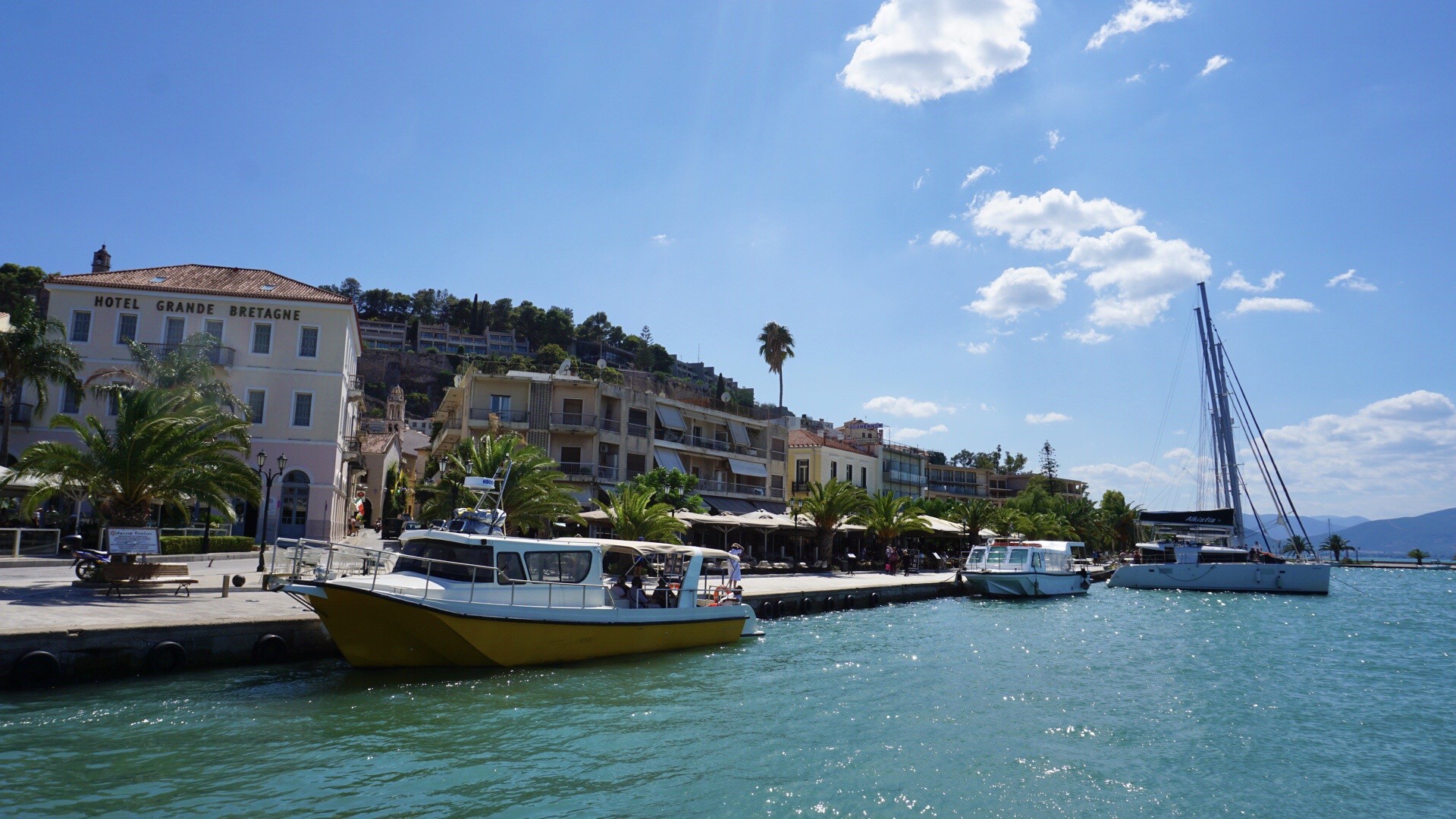
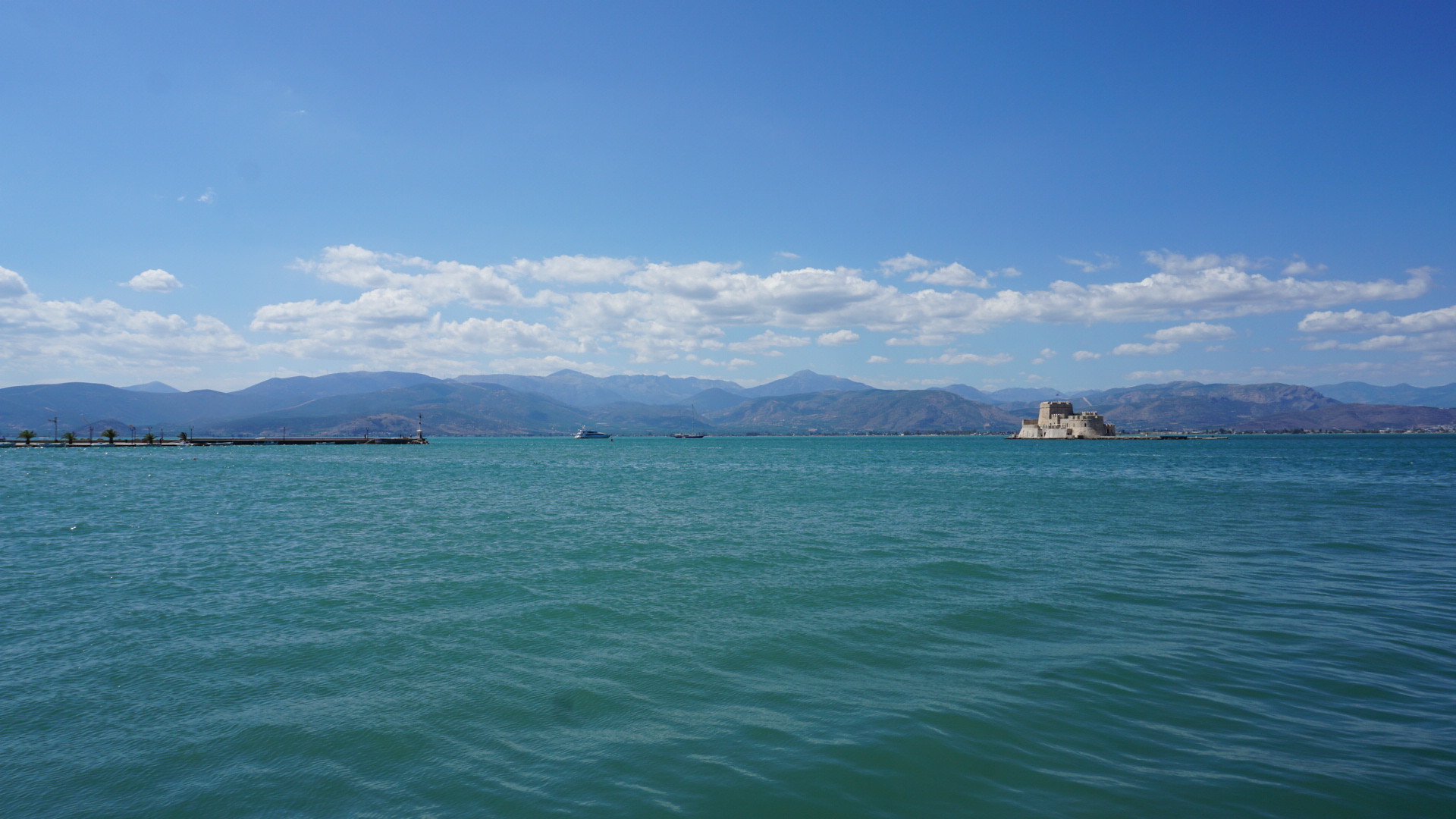
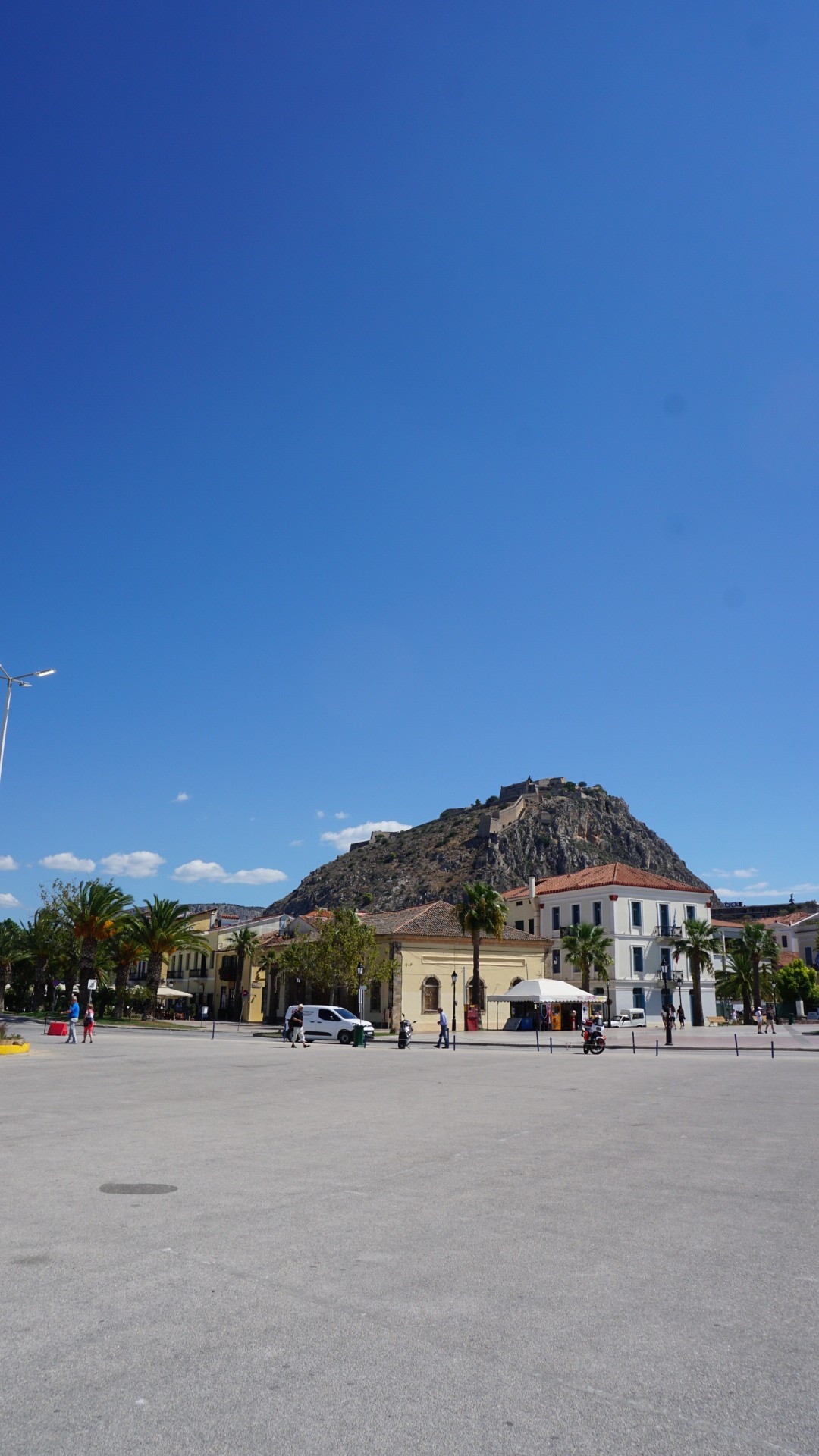

The last stop of the day was Epidaurus, home to an incredibly large and well-preserved ancient Greek theatre. We entered through the side door, originally intended for actors’ use only.
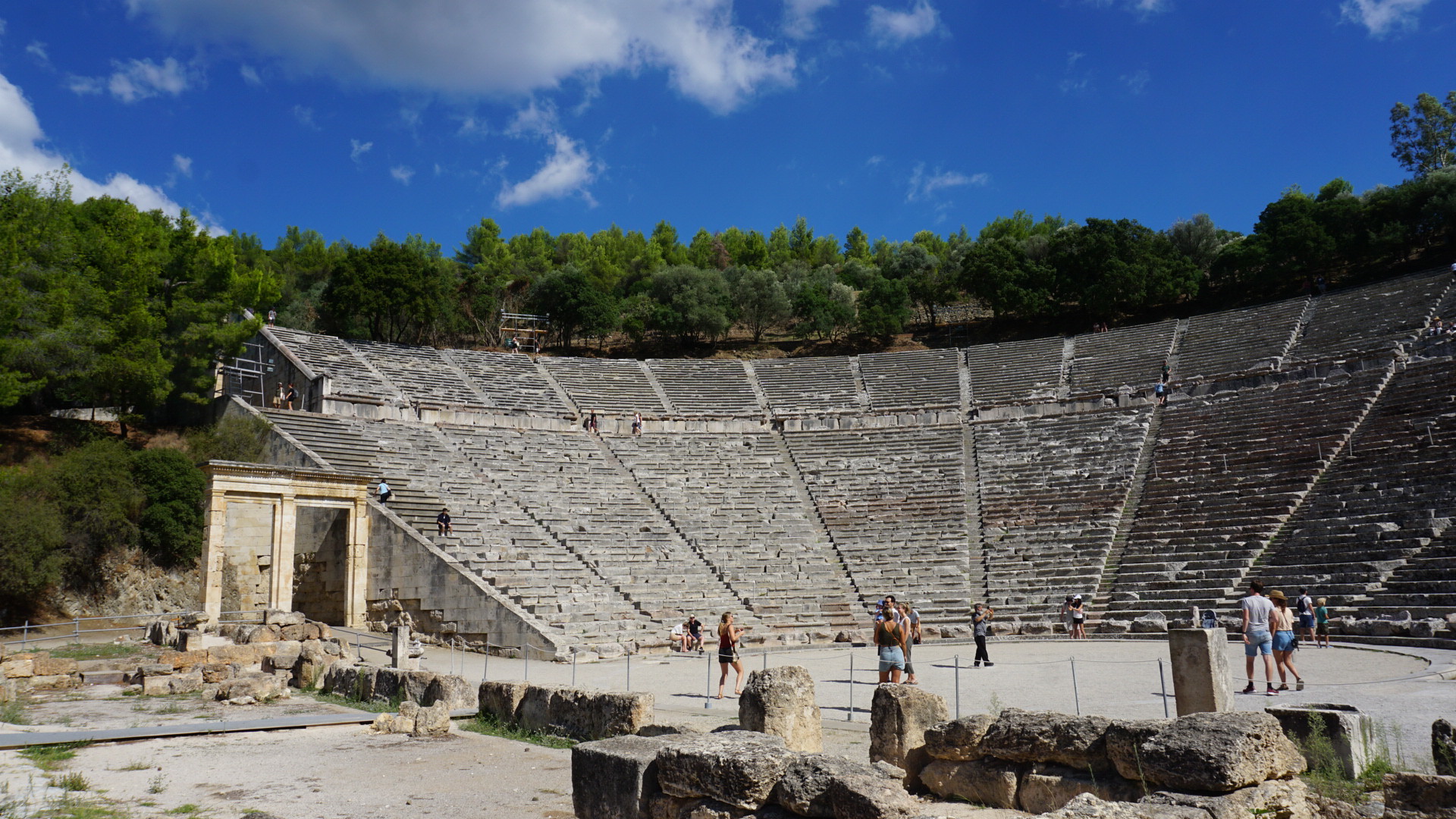
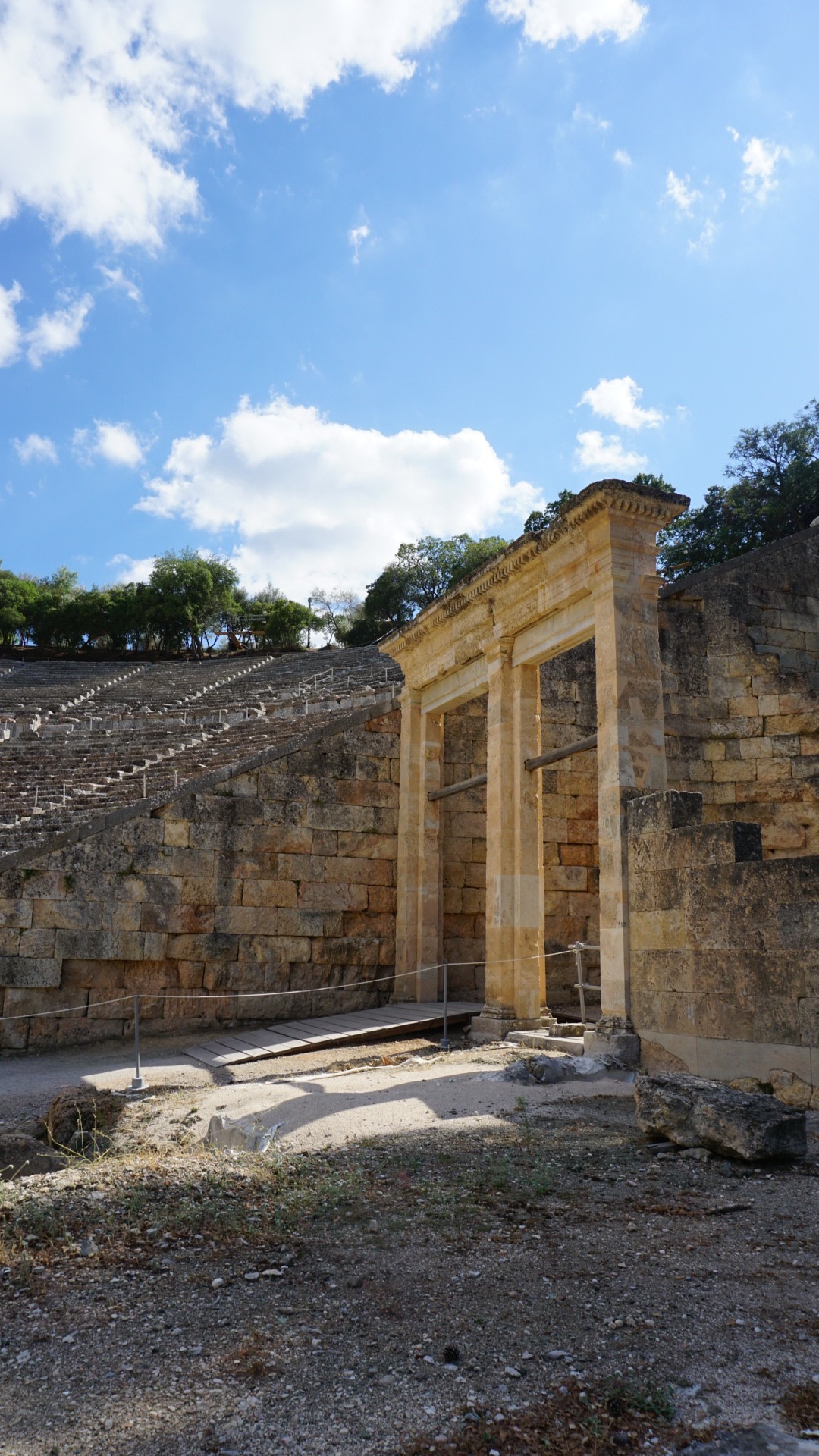
Standing at the center of the stage, the guide demonstrated the ingenious acoustic techniques that the ancient Greeks had developed to project sound. For instance, if a choir is standing closer to the left side of the audience, they will actually turn the other way and sing to the right side of the audience, because the sound will travel better! And when you stand at a particular spot in the middle, your voice will resonate throughout the theatre, as if there is a magical microphone.


I had a brief vertigo episode on the bus during the drive to Epidaurus, so I did not feel safe climbing up the steps of the theatre, though I would have liked to. Instead, I walked downhill to check out the small museum associated with the theatre. It was mostly the same artifacts that you see in other Greek museums: statues, funerary carvings, and jars.
After that, it was time to head back to Athens. The drive back was magnificent. The landscapes changed from dry, dusty fields to dark green hills to stunningly blue oceans, islands and volcanoes – and finally, of course, the hustle and bustle of downtown Athens. It was around 6:30 p.m. when we got dropped off at Hotel Amalia.
All in all, this was an incredible day trip, and very much worth it. I would recommend it for solo travellers, couples, adult families… if you love history and hate driving, this is the tour for you. I can’t wait to come back to Greece and do more tours like this.